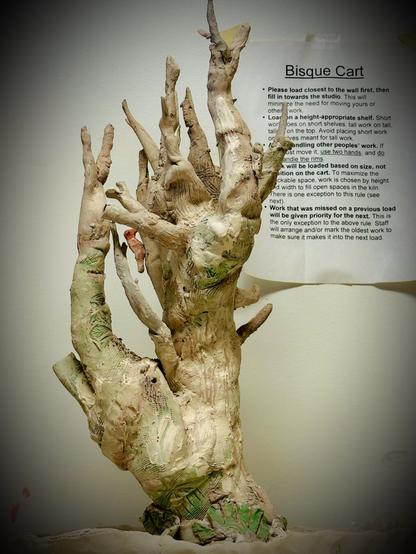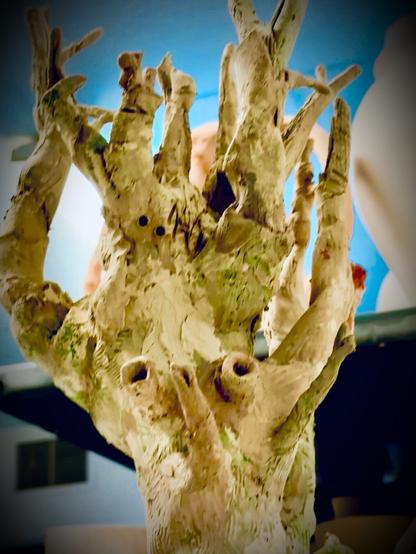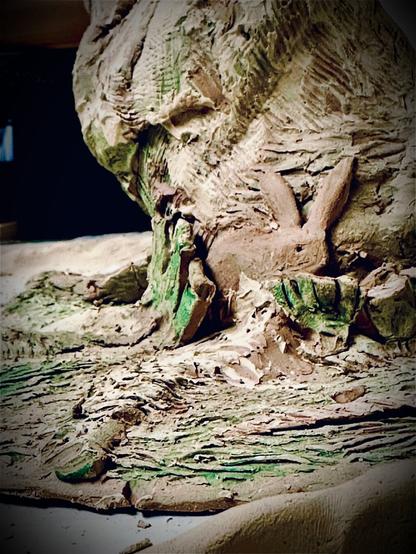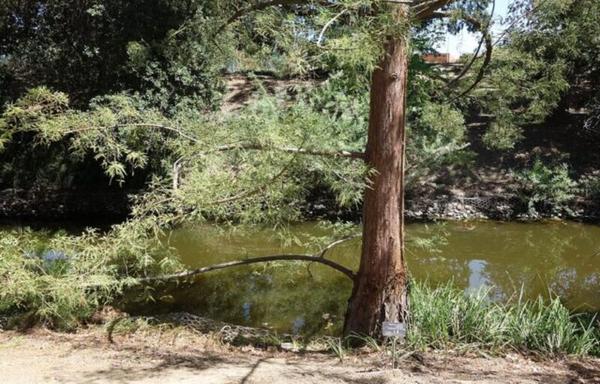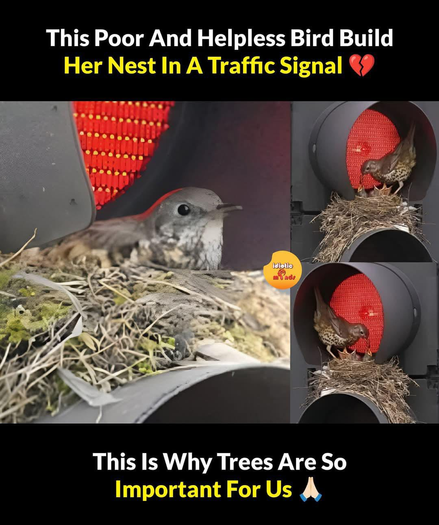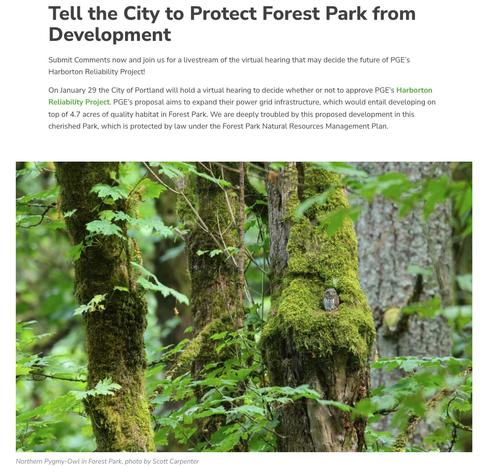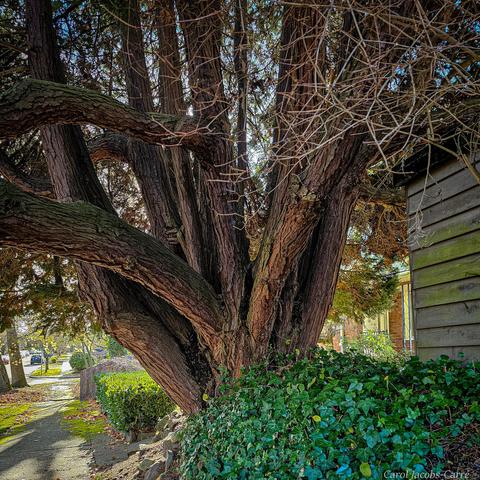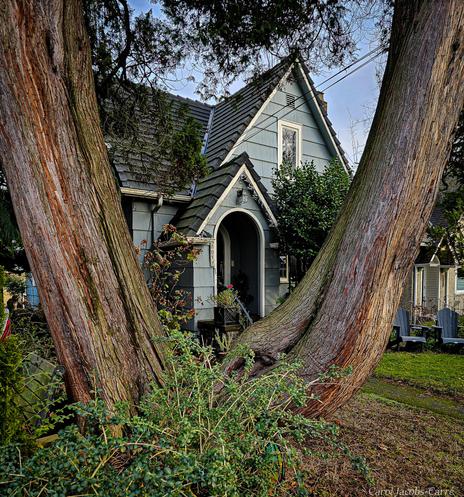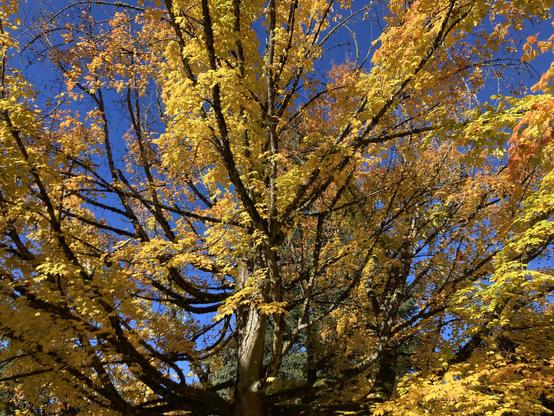#savethetrees
#Greenware #FiskFire #TreeArt #NatureArt #CeramicArt #CeramicSculpture #TreeCeramic #SpringCeramic #SpringArt #AnimalArt #HandBuilding #HappyArt #HugaTree #PlantATree #ThankATree #SaveTheTrees #SaveThePlanet #LoveYourMother #thankYourMother #AnotherWorldIsPossible #unmundodondequepanmuchosmundos #TreeFace
(24 Apr) A 2,000-year-old battle ended in fire, and a tree species never recovered https://s.faithcollapsing.com/10l6b Archive: ia: https://s.faithcollapsing.com/32h2t #ancient-china #ancient-warfare #archaeology #endangered-species #han-dynasty #save-the-trees #science
An ancient battle has driven a wetland species almost to extinction https://arstechni.ca/YBUE9 #endangeredspecies #ancientwarfare #ancientchina #savethetrees #Archaeology #handynasty #Science
https://theorcasonian.com/forest-service-loses-billions-subsidizing-logging-not-cleaning-outhouses/#:~:text=A%202019%20report%20by%20the,Bureau%20of%20Land%20Management%20lands.%E2%80%9D
#Nature #PublicLands #Wilderness #SaveTheTrees #ClimateCrisis #ForestService #ArrestMusk #ArrestTrump #TraitorGOP
Taxpayer losses of nearly $2 billion a year thru the federal logging program carried out on National Forest and Bureau of Land Management lands.
#AshTree Protection Collaboration Across #Wabanakik
"Ash trees, in particular brown ash (used interchangeably with black ash, Fraxinus nigra), are a cultural keystone species for Wabanaki communities and a crucial part of wetland ecosystems in the Northeast. The spread of the invasive forest pest EAB has caused 99% brown ash tree mortality in other areas of Turtle Island, and will have a considerable effect on ecosystems and traditions as it spreads through the Dawnland.
"Partners of the Ash Protection Collaboration Across Wabanakik’s (APCAW) have been working for 20 years to prepare for the onset of EAB in Northeastern forests. We are committed to identifying research-informed strategies to protect the future of ash in the Dawnland that align with Wabanaki priorities. The purpose of this website is to share practical knowledge with those who seek to take actions to maintain ash on the landscape. If you’d like to receive event announcements in your inbox, sign up for our newsletter here. Read on to find information about the cultural importance of ash, seed collection efforts, and emerald ash borer (EAB) management.
Why are we called the Ash Protection Collaboration Across Wabanakik?
"Our name emerged from collaborative conversations about the goals of our shared work. We decided to use the word #Wabanakik to refer to the place where we are located in an effort to center Wabanaki language and ways of knowing. Wabanakik is a term with slightly different meanings in each eastern #Algonquin language, but can be understood in English to mean either 'in the location of the land which is referred to as the #Dawnland' or 'in the location of the People of the Dawn.' Wabanakik stretches from Newfoundland in the north, to mid-Maine in the south, and parts of Quebec in the west.
"APCAW members acknowledge that we are located in the homeland of the #WabanakiConfederacy, which includes the #Abenaki, Maliseet, Mi’kmaq, Passamaquoddy, and Penobscot Tribal Nations. Wabanakik has a ongoing legacy of #colonialism, of #StolenLand, broken treaties, forced removal and genocide of Wabanaki peoples which have fragmented Wabanaki relationships to land. The People of the Dawn maintain a sacred relationship with brown ash trees since time immemorial. APCAW’s work is to center, protect, and restore this ongoing relationship between Wabanaki peoples and ash ecosystems.
Who are we?
"The Ash Protection Collaboration Across Wabanakik (APCAW) is a group of Indigenous and non-indigenous researchers, Tribal members, and forest caretakers working together to bring more awareness of the cultural and ecological significance of ash trees and efforts to conserve them. APCAW continues the initiative set forth by the EAB and Brown Ash Taskforce, which began in the early 2000s to facilitate the collaborative capacity of Wabanaki basketmakers, Tribal Nations, state and federal foresters, and others to prevent, detect, and respond to the EAB. APCAW gives platform to the work of a broad range of partners, including:
• University of Maine School of Forest Resources
• Tribal Nations
#MikmaqNation, Presque Isle
#HoultonBand of #Maliseet Indians, Houlton
#PassamaquoddyTribe at #IndianTownship
Passamaquoddy Tribe at #PleasantPoint #Sipayik
#PenobscotNation, Indian Island
• Wabanaki basketmakers and the Maine Indian Basketmakers Alliance
• State and Federal Forestry Agencies
USDA APHIS
State of Maine Department of Agriculture & Forestry
State, Private, and Tribal Forest Service
• Conservation organizations and seed saving organizations
The #WildSeedProject
#MaineLandTrustNetwork
Learn more (includes links to resources):
https://umaine.edu/apcaw/
#Maine #MFS #EAB #EmeraldAshBorer #AshTree #AshTrees #APCAW #InvasiveSpecies #Wabanaki #ProtectTheForests #MaineNews #Maine #SaveTheTrees #WabanakiCulture #WabanakiBasketry #WabanakiTradition #Forestry #ProtectTheSacred
How to protect #AshTrees and preserve a #Wabanaki tradition
October 29, 2024
PORTLAND PRESS HERALD • October 29, 2024
"How to help protect the brown ash tree used in Wabanaki basketry from the invasive emerald ash borer.
• Cut, buy, or burn only local firewood.
• Monitor for telltale signs of infestation.
• If you own land, know if you have brown ash.
• If your ash is healthy, contact a forester or #MaineForestService about how to keep them alive.
• Collect seed pods from healthy brown ash for replanting.
• Consider offering Wabanaki artists access to your brown ash."
Source [may be behind a paywall]:
https://www.pressherald.com/2024/10/29/how-to-protect-ash-trees-and-preserve-a-wabanaki-tradition/
#Maine #MFS #EAB #EmeraldAshBorer #AshTree #AshTrees #APCAW #InvasiveSpecies #Wabanaki #ProtectTheForests #MaineNews #Maine #SaveTheTrees #WabanakiCulture #WabanakiBasketry #WabanakiTradition #Forestry #ProtectTheSacred
#EmeraldAshBorer Confirmed on #MountDesertIsland
Maine Department of Agriculture, Conservation and Forestry sent this bulletin at 04/01/2025 03:42 PM EDT
AUGUSTA, #Maine — "Maine State Forester Patty Cormier today announced that the #MaineForestService (#MFS) Forest Health and Monitoring Division has confirmed the presence of emerald ash borer (#EAB) on Mount Desert Island (#MDI) outside of the previously regulated area.
"A licensed professional arborist in Bar Harbor made the detection. The infested area shows signs of a well-established EAB population, with visible damage to ash trees from public roads.
"'This is an unfortunate but not entirely unexpected discovery,' said Cormier. 'We’ve known that EAB continues to spread throughout Maine, and we appreciate the vigilance of local arborists and community members. Public awareness is important to detecting and responding to this destructive forest pest.'
"As a result of this detection, the Maine Department of Agriculture Conservation and Forestry will expand the current EAB quarantine to include all towns on MDI. This non-contiguous quarantine may help slow the spread.
"Key guidance for landowners, municipalities, and the public includes:
- #AshTree material should remain on MDI. Logs, branches, or wood waste from removed trees should be disposed of on-site or at an island-based disposal facility.
- Ash chips are not regulated and may be legally transported off the island.
- High-value ash trees that are not heavily infested can be evaluated and may be preserved through systemic insecticide treatment by licensed pesticide applicators. These treatments require periodic reapplication.
- Infested ash trees will decline quickly and become structurally unstable. Property owners and managers are urged to evaluate ash trees near infrastructure for potential treatment or removal.
"The MFS and collaborators, including the Ash Protection Collaboration Across #Wabanakik's (#APCAW), Sustaining Ash Partners Network (#SAPNe), and #USDA Animal and Plant Inspection Service, continue to support ongoing mitigation efforts, including:
- Release of biological control organisms from federal partners by MFS through community partnerships.
- Seed collection and protection for future restoration led by APCAW.
- Education and technical support by varied partners.
- Public tree management and replanting through state and federal funding opportunities.
"'Emerald ash borer is one of the most damaging forest pests we face,' added Cormier. 'By working together—with awareness, early detection, and coordinated response—we can slow its spread and protect Maine’s forest resources.'"
Learn more:
https://content.govdelivery.com/accounts/MEDACF/bulletins/3d9a239
#InvasiveSpecies #Wabanaki #ProtectTheForests #MaineNews #Maine #SaveTheTrees #WabanakiCulture #WabanakiBasketry #WabanakiTradition #Forestry
I just feel like sharing these three articles today in no particular order, for no reason.
https://www.404media.co/the-200-sites-an-ice-surveillance-contractor-is-monitoring/
https://margaretkilljoy.substack.com/p/into-the-demiground
#communityGarden #guerillaGardening #resistance #LandBack #SaveTheTrees #AbolishICE
Urbanization is forcing wildlife to adapt in unexpected ways. This bird built its nest in a traffic signal due to a lack of natural habitats. Let's protect our trees and green spaces to provide safe homes for our wildlife. 🌳🐦 #Conservation #UrbanWildlife #SaveTheTrees
PGE wants to cut down part of Portland, Oregon's Forest Park.
Cutting down a bunch of mature trees in Forest Park because the corporation doesn't want to spend a little more to go around is wrong and should be stopped.
Submit comments (contact info and talking points below via link) to the Hearings Officer, your City Councilors, AND the Mayor by 9 a.m. on Jan 29th. (If you already submitted comments to the City in late 2024, please submit again)
Comments can be sent via email. Include the Hearings Officer, all 3 City Councilors from your district, and the Mayor as the recipients. If you live outside of the City of Portland, feel free to include the hearings officer, Mayor and any assortment of City Council members.
Public hearing is this Wednesday, 1/29 at 9am, all virtual.
Here is a link to the Bird Alliance of Oregon's handy action page:
https://birdallianceoregon.org/take-action/tell-the-city-to-protect-forest-park-from-development/
#PDX #Trees #SaveTheTrees #PortlandOr #Portland #SaveTheCommons
My quandary for #ThickTrunkThursday (or i it supposed to be Tuesday? Who knows?)
#Photography #SaveTheTrees #SeattleWashington
I volunteer to measure what are termed "majestic trees" in Seattle. The majesty is determined by trunk diameter, which is based on the tree species being measured. When we encounter a split trunk, instructions say to measure the largest trunk at full diameter, and the rest at 1/2 diameter. Oooookay. How to measure the one on the left? I'll have to ask the property owner permission to scramble in the tree, I guess. The other is relatively easy thank goodness!
Don't print. Save paper. Save trees. Save the tech guy from having to fix your printer.
If you live in Portland, Oregon, Sign Up Now to Testify at the Nov. 13 CC Hearing to SUPPORT Keeping the Large Tree Amendment by making it Permanent!
Registration to testify virtually or in person at the City Council's Nov. 13 afternoon session is now open. Register (links at end of this post): scroll down to the Wed., Nov. 13, 2 pm afternoon heading, then go to item 989, and click on the "Testify on this item button" at the bottom, where you'll fill out a quick form.
For those who wish to testify in writing, you can send your letter of support well before Nov. 13 to cctestimony@portlandoregon.gov, and put "Testimony in support of making the Large Tree Amendment permanent, Nov. 13 hearing, item 989."
For those of you who want a recap of why this amendment is so important to retain in the tree code, see here:
info from Trees for Life: https://preview.mailerlite.io/preview/357638/emails/136204511943329415
Register: https://www.portland.gov/council/agenda#toc-wednesday-november-13-2024-2-00-pm-
Submit written testimony: https://www.portland.gov/auditor/council-clerk/submit-written-testimony
⚠️The #American 🇺🇲#Billionaires 🤮 destroying the #Amazon forests! 😱😭🤬 #TaxTheRich before they kill us all! 😤 #SaveTheTrees, the best #CarbonCapture there is!!🌳❤ #ClimateCrisis 🌍😣 Sign the #Petition here please! 👇 #HumanRights #StopDeforestation https://share.eko.org/888640788t?referring_akid=a236060342.21155631.t_2B4N&referring_source=conf
⚠️Firma la #petición. Pide al Banco #Santander que deje de financiar la deforestación! 🌳🔥🤬 Santander Bank 🏦, STOP financing #deforestation! #SaveTheTrees 🥰🌳🔥🤬 #Petition 👇 @GreenpeaceEU 👏
https://bit.ly/43t9rNC
5 years of fasting and striking from working and shopping once a week for the climate.*
#climatechange #climate #climateaction #climatestrike #climatejustice #environmental #climatescience #earth #earthfocus #MotherEarth #animals #pets #petlovers #heatwave #heatwaves #flooding #globalwarming #nature #naturelovers #naturephotography #natural #environment #environmentaljustice #bees #trees #savetheplanet #savethebees #savetheearth #savetheocean #savethetrees
*If you are fasting please seek supervision from medical doctors. Children and teens have specific nutritional needs that are imperative for growth and health so please do not fast if you are not an adult. Please do not fast if you are an adult with dietary needs due to health or medical issues.
@Blort very important issue. Saving mature trees is critical yet home owners towns and states cut down mature #trees that can otherwise regenerate when properly managed by #arborists. Not enough time and #education is focused on preserving mature trees which maintain a huge network of underground life and connectivity within the earth, surrounding plants and #wildlife. They are the lifeblood of our ecosystem. Walk among them and you feel Life itself. #SaveTheTrees #oaktrees #mapletrees
Aber man geht verantwortungsvoll mit Ressourcen um!
#saveTheTrees
As insect invaders approach, researchers use a combination of indigenous knowledge and Western forestry science to save a valuable tradition
By Willy Blackmore Nov 25, 2019,
"Suzanne Greenlaw doesn’t like chainsaws. She moves quickly through the chest-high ostrich ferns, frilly leaves heavy with rain, as the orange saw sputters and then chokes. 'She gets all freaked out,' says Gabriel Frey, laughing as he yanks the starting cord again with one heavily muscled arm, the saw whirring to life. Putting the bar to a trunk of shaggy, gray-tinged bark, he begins to cut, the grinding sound of the saw echoing through the damp, green-lit stand.
"The felled tree is one of three that Frey and Greenlaw carefully picked out of the woods on the cool, damp July day in far northern #Maine. Plenty of logs are hauled out of the forest there, in #AroostookCounty, which is home to a chunk of the #NorthMaineWoods, a 3.5 million-acre expanse of commercial timberland. But Frey and Greenlaw, and the stand of gray-barked trees, are part of a tradition that’s far older than any timber camp or lumber mill. The trees are #FraxinusNigra, commonly known as #BlackAsh or #BrownAsh, which have forever been at the hearts of the lives of Maine’s indigenous tribes.
"Greenlaw, a #Maliseet forestry scientist working on her PhD at the University of Maine, is at the forefront of the effort to protect the state’s brown ash. The trees are at risk of being wiped out by the emerald ash borer, an #InvasiveSpecies that has been killing ash trees in North America for the better part of 20 years. With the help of Frey, a renowned #Passamaquoddy basket maker, as well as the broader #Wabanaki basket-making community, the married couple is fighting to preserve the rich tradition the tree supports."
#IndigenousTraditions #IndigenousWisdom #EmeraldAshBorer #SaveTheTrees #ClimateChange #InvasiveSpecies #MaineWoods
In #Montana, a Tribally Led Effort to Restore the #WhitebarkPine
Not just a keystone species for the #ecosystem, the tree is also a cultural keystone. Can it come back from the brink?
By Sarah Mosquera
June 5, 2024
"Across the North American West, giant, ancient, gnarled whitebark pines grow along mountain ridges where practically no other tree can survive. Although these trees have been known to thrive for hundreds or even a thousand years, they have faced an accelerated decline for nearly a century. In fact, across much of the northwest, dead whitebark pines outnumber live ones. According to a 2018 study conducted by the U.S. Forest Service, the tree’s population has declined by up to 90 percent in certain areas, including on the lands of the Confederated #Salish and #Kootenai Tribes.
"The whitebark pines play a considerable role in the region: They are a keystone species in high-elevation ecosystems. Over 100 species rely on the tree for food, shelter, and the habitat it provides, including squirrels, grizzly bears, and birds like the well-known Clark’s Nutcracker. The trees also contribute to ecosystem stability by preventing soil erosion and regulating water flow.
"Maintaining the trees, then, is vital. And on the #FlatheadIndianReservation in western Montana, which contains some 110,000 acres of whitebark pine habitat, the Confederated Salish and Kootenai Tribes, known as #CSKT, are fighting to protect and restore this iconic and ecologically important species, ensuring its survival for future generations.
"The epicenter of the decline in northern Montana, according to Diana Tomback, a professor of integrative biology at the University of Colorado, Denver, includes part of the Flathead Indian Reservation. 'That area has the highest blister rust infection rates and mortality of any other part of whitebark pine’s range.'
"#WhitePineBlisterRust, an invasive #fungus brought over from Europe in the early 20th century, is one of the main reasons for the whitebark pine’s steep decline. The rust causes cankers that disrupt the flow of water and nutrients within the tree, killing it. Another threat, infestations of mountain pine beetles, have been on the rise — a trend that is influenced by increasing temperatures. Mountain pine beetles used to be limited to lower elevations, but a warmer climate has allowed them to climb up to the whitebark pine’s habitat.
[...]
"The Tribes are working towards cultivating and planting 187,000 whitebark pine trees within the Flathead Indian Reservation. In November 2023, the CSKT received a nearly $3.5 million grant through the America the Beautiful Challenge for their work, which will help support various ecological initiatives, such as whitebark pine restoration and the development of a skilled conservation workforce."
Read more:
https://undark.org/2024/06/05/montana-cskt-restore-whitebark-pine/?utm_source=pocket-newtab-en-us
